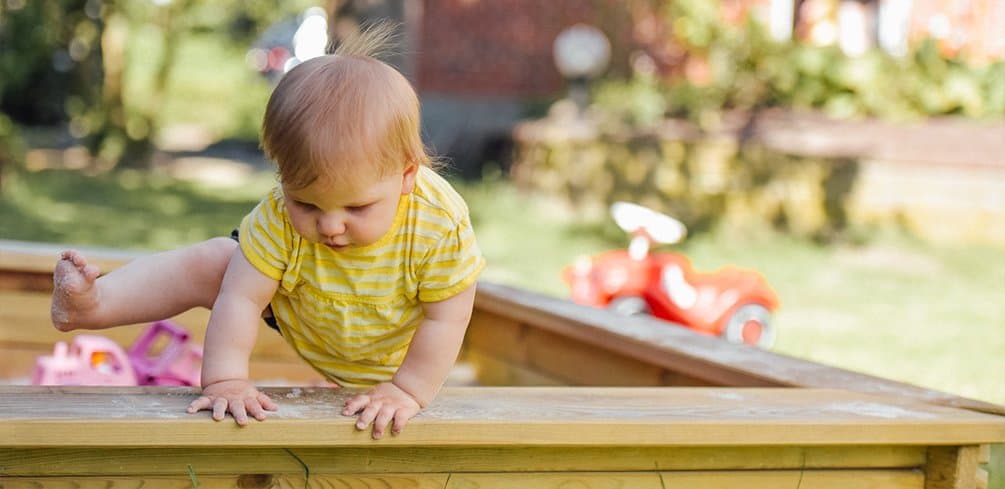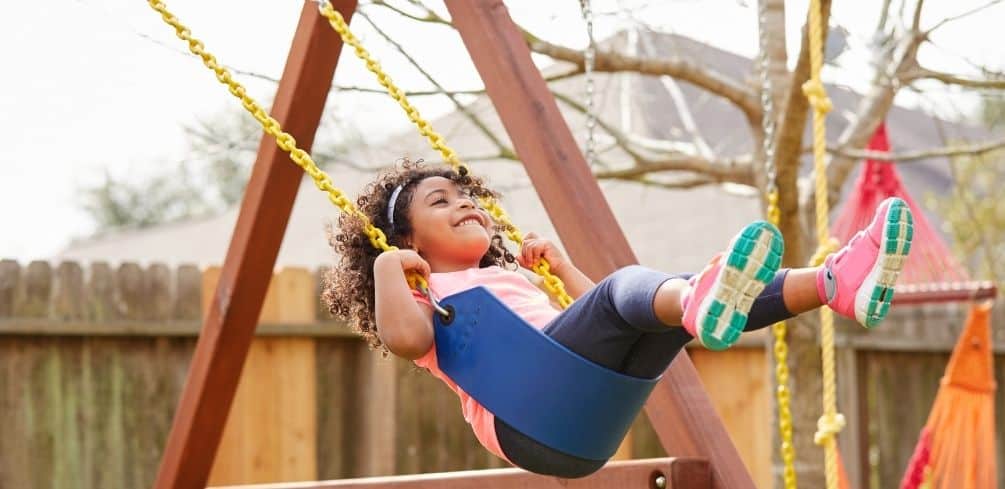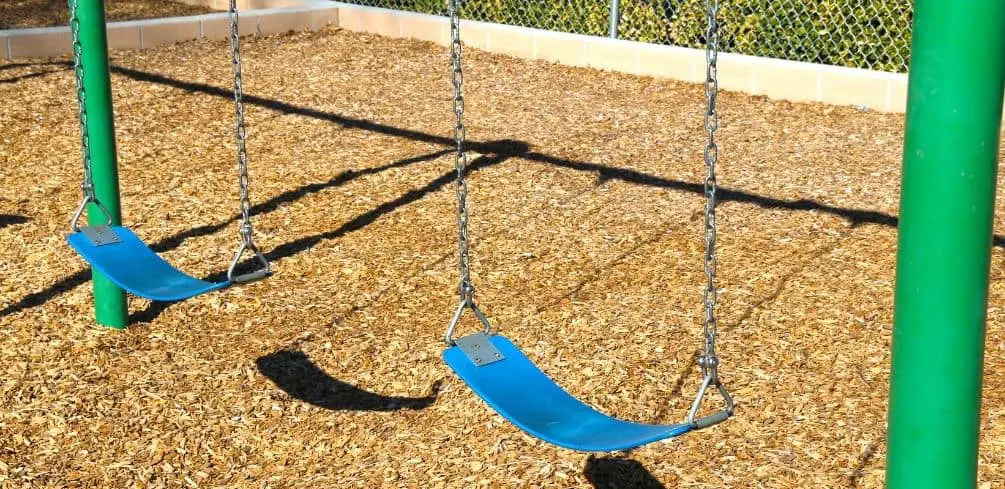Your backyard is a canvas, and deciding where to place your shed is just one of the many brushstrokes in creating your perfect outdoor masterpiece.
The placement of this practical structure can impact not only the aesthetics of your garden but also its functionality. Like choosing where to plant a rose bush or which corner gets the coveted sun lounger spot, finding the ideal location for your shed requires careful consideration.
In this guide, we’ll walk you through everything you need to know about selecting that picture-perfect spot for your storage unit. We’ll cover the essential factors from understanding local zoning laws to considering access requirements and potential hazards.
Considering the Purpose and Size of Your Storage Unit

Before you decide on the perfect spot for your shed, it’s crucial to consider what you’re planning to use it for and just how big it needs to be.
If you intend to store garden tools or a lawnmower, a smaller shed may suffice. However, if you envision using your shed as a workshop or an outdoor office, then size might matter significantly more.
A larger structure will require more space but will also provide room for workbenches and storage racks. The choice of shed materials can also play into size considerations – metal or plastic sheds tend to be lighter and easier to move around, while wooden sheds are typically sturdier but heavier.
When choosing where in the yard to put your shed, remember that its location should optimize space usage without compromising the overall aesthetic of your backyard.
Consider how much sunlight and shade the area gets throughout the day; too much exposure could lead to overheating inside the shed during summer months or potentially damage certain materials over time.
Conversely, if placed in a constantly shaded area, dampness could become an issue causing potential damage, especially if made from wood.
Another point worth considering is accessibility. Your new backyard feature should be easy enough for you to access routinely without causing any inconvenience or obstruction in your daily activities.
If possible, try placing it near existing paths or driveways for ease of movement – especially useful if heavy items need moving in and out regularly. Also, look at optimizing space by thinking vertically – adding shelves inside can maximize storage capacity regardless of its footprint size!
Always keep these factors in mind when deciding on where best suits your new addition – they’ll surely aid in this exciting transformation process!
Understanding Local Zoning and Building Laws

You’ll need to get familiar with your local zoning and building laws, as they can significantly influence the location of your new outdoor structure. These regulations often dictate how close structures can be placed to property boundaries or existing buildings.
You should check if there are any restrictions on shed height, size, or style that could affect your plans. For instance, some zones may require a certain distance between the shed and property lines for fire safety reasons.
Other areas might restrict sheds from obstructing views or sunlight in neighboring properties.
In this vein, you also need to understand permit acquisition processes, which vary from locality to locality. Some cities demand permits for sheds over a certain size, while others won’t bother unless it’s wired for electricity or contains plumbing facilities.
Neighbor considerations also play an important role in where you place your shed; you wouldn’t want your new structure causing any disputes about blocked views or overshadowing gardens.
| Local Zoning Law | Permit Required? | Notes |
|---|---|---|
| Distance to boundary | Yes/No | Be aware of the maximum allowable heights |
| Shed Height Limitations | Yes/No | Be aware of maximum allowable heights |
| Obstruction of Views/Sunlight | Yes/No | Consider neighbors’ rights to light/view |
| Electrical/Plumbing Facilities Installation | Yes/No | Requires specialist inspection & approval |
When positioning your shed, remember that it will become a permanent feature of your landscape design – choose wisely! If possible, try finding a balance between functional needs and aesthetic desires.
Avoid placing it too close to trees since falling branches could cause damage, and roots might interfere with its foundation over time.
Also, consider the sun’s path across your yard – positioning it where it gets good morning light but is shaded from hot afternoon rays would be ideal for a gardening shed.
Assessing Utility and Access Requirements
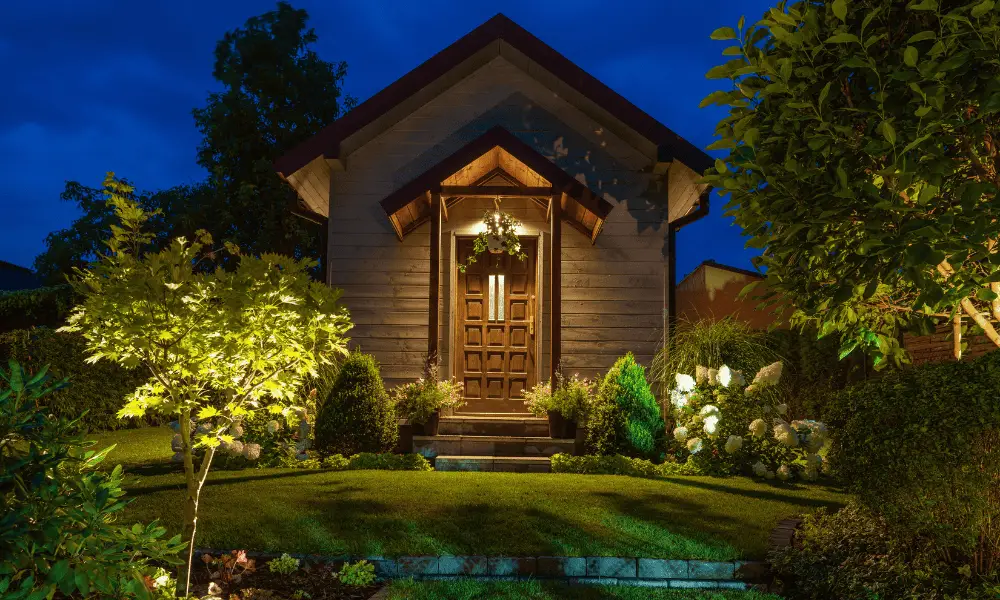
Imagine how wonderful it’d be to have your dream outdoor structure conveniently located, easily accessible, and equipped with all the utilities you need. As you begin planning where to put your shed in the backyard, it’s essential to consider utility and access requirements.
These necessities are often overlooked but play a crucial role in determining the best location for your shed. To ensure smooth operations within your shed, factor in drainage considerations and soil composition when selecting its location.
A well-drained area is vital to prevent water from pooling around or under your shed, which can lead to structural damage over time. Check if the potential spot has any signs of standing water after heavy rains – this could indicate poor drainage.
Moreover, understanding the soil composition in different parts of your backyard is equally important.
If you’re dealing with sandy or clay-heavy soils that don’t drain well or poorly compacted soils that may shift over time, these conditions will require more groundwork before installing a shed.
As for access requirements, think about how easily you can get to and from the storage structure without disturbing other areas of your garden design.
Will moving large items into and out of the shed cause problems?
Is there enough room for doors to swing open freely?
Also, consider whether future utility connections like electricity or plumbing might be necessary – proximity to these resources could influence where you decide on placement too.
Carefully assessing these factors now can save you from headaches down the road, ensuring that your new garden addition not only looks great but functions seamlessly as well.
Evaluating Potential Hazards
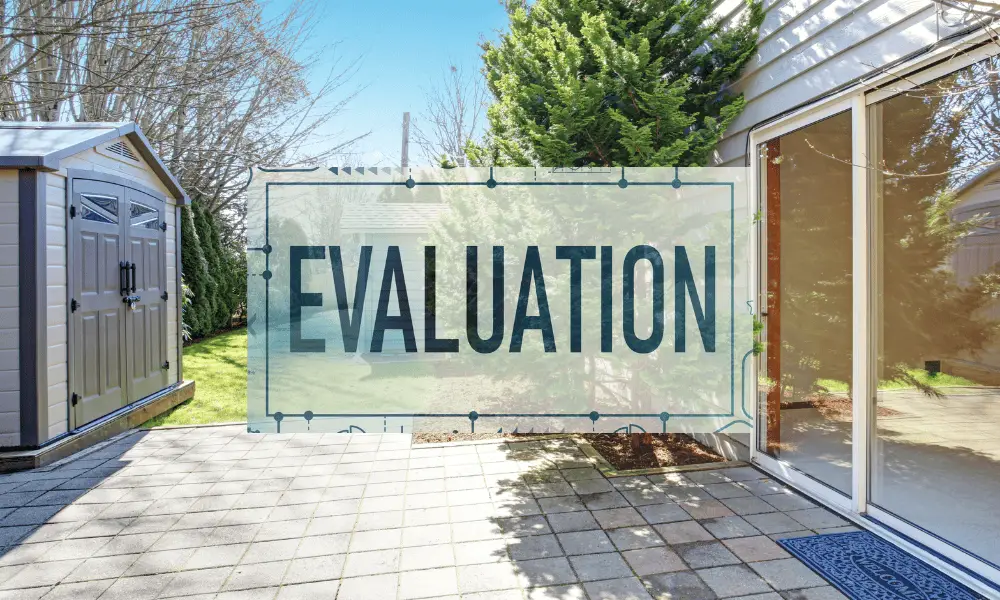
Navigating the labyrinth of garden planning isn’t just about aesthetics and practicalities; it’s also about dodging potential hazards that lurk in the shadows.
Shed placement safety is an essential aspect when you’re figuring out where to put your shed in your backyard.
It’s not simply about finding a spot that looks good or is convenient; you need to take into account potential dangers as well. This could mean anything from a tree branch that might fall on your shed to the uneven ground that could make it unstable.
To help guide you through this process, here’s a table outlining some common hazards and their prevention measures:
| Potential Hazard | Prevention Measure |
|---|---|
| Overhanging Branches: These can fall on your shed due to wind or disease. | Regularly prune any overhanging branches and monitor trees for signs of disease. |
| Uneven Ground: This can cause instability or water pooling around your shed. | Maintain clear space around the shed and keep the area clear of dry leaves or other flammable materials. |
| Proximity to Utility Lines: Digging near utility lines can be dangerous. | Always call before you dig—utility companies will mark out where lines are buried free of charge. |
| Fire Hazards: Dry vegetation close by can pose a fire risk. | Maintain clear space around the shed and keep area clear of dry leaves or other flammable materials. |
When addressing these concerns, remember that preventative measures aren’t merely reactionary — they’re an investment in long-term peace of mind.
By taking precautionary steps like regular pruning, proper leveling, maintaining safe distances from utility lines, and ensuring clear spaces around the shed are free from flammable materials, you are making sure that your backyard haven remains secure for years to come.
So don’t rush with placement decisions; take time to prevent hazard risks today so tomorrow’s surprises won’t catch you off guard!
Choosing the Best Sunlight Exposure and Aesthetics

Don’t underestimate the power of sunlight and aesthetics when selecting a spot for your outdoor storage; it’s more than just about functionality. It’s also about creating that perfect harmony between utility and beauty.
Consider the Sunlight’s Impact on your chosen area throughout the day.
Does the spot get full sun exposure, partial shade, or is it mostly in shadow?
The amount of sunlight can affect not only how well you can see inside your shed during daylight hours but also influence temperature control. Too much direct light could make your shed unbearably hot during summer months, while too little might mean a cold and damp space in winter.
The Aesthetic Value of where you place your shed should not be overlooked either. Your backyard is an extension of your home – so consider its overall design and how a shed might complement or clash with existing elements.
Perhaps there’s a lovely mature tree that could provide natural shade to the shed while adding visual appeal.
Or maybe positioning it near a flower bed would enhance the view from within?
Keep in mind that sheds don’t always have to be hidden away; they can integrate into landscapes as charming features if placed thoughtfully.
Remember, taking time to study your backyard’s unique conditions will pay dividends in both practical and aesthetic terms.
On the one hand, understanding Sunlight Impact will ensure you create an environment inside your shed that suits its purpose best – whether it’s storing delicate plants or tools prone to rusting.
On the other hand, considering Aesthetic Value helps transform what could be an eyesore into an asset — adding character to your garden scene instead of detracting from it.
Therefore, think carefully about these factors when deciding where to put up that new addition in your green oasis.
Conclusion
Well, after all this hullabaloo about where to plant your humble shed, I’m sure you’re practically an expert in local zoning laws and the sun’s daily jaunt across your backyard.
Who knew your pursuit of storage solutions would catapult you into a thrilling world of soil analysis and landscaping aesthetics? But don’t rest on your laurels just yet; remember, with great sheds come great responsibilities.
Keep that newfound knowledge polished and ready for action – who knows when you’ll be called upon to dispense wisdom on optimal shed placement again?


